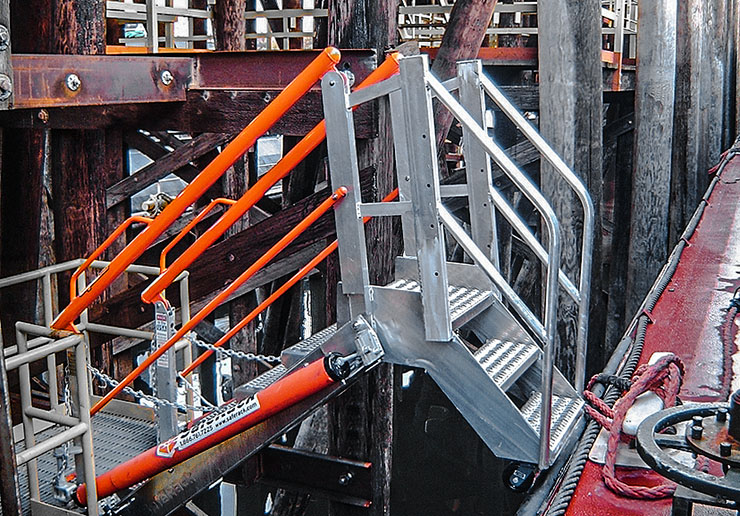Marine dock managers, dock workers, and other crew members who need to access your vessel while on the seaport are all in danger of injury or death due to safety hazards while in the marina area. Because ships are constantly moving on the ocean, you must offer sturdy, secure, and industrial-strength marine gangways to prevent falls. Every ship gangway in operation at your location must be strong and safe.
You may already be trying to satisfy fall prevention agreements with local ports and maritime terminals. However, are you certain that your safety procedures account for all of the dangers your employees are exposed to?

Reduce Usual Gangway Threats
Because they want to complete the process as swiftly as possible, companies occasionally put convenience ahead of employee safety. Employees, on occasion, may utilize improvised wooden boards to gain access to vessels parked next to one another. Such approaches enhance the likelihood of a laborer plunging into water and drowning.
Along with establishing secure metal gangways, placing protective netting beneath them might give an extra layer of protection if the lower end overhangs the sea. Take efforts to reduce the expected marine-loading equipment issues as you establish a better working environment:
- Ensure that stairs and surfaces are free of liquid agents
- Check if metal railings are secured firmly
- Marine dock operators should install gangway netting as a secondary protection
- Safety managers should optimize the placement of these safety nets
OSHA Gangway Standards Must Be a Top Consideration
As the authority on workplace safety, OSHA is a great resource for creating safer gangway procedures. Personnel should not join or depart a vessel, excluding a barge or river towboat, until the following standards are completed, according to OSHA:
- The gangway is kept in good condition
- The gangway has been secured
- A guardrail with a minimum height of 33 inches is installed on either side of the gangway
- Check if midrails are on the gangway
- Rails are securely fixed and constructed using pipe, chain, wire, or rope
- Each gangway has been precisely cut according to standards
- If the gangway’s ground is more than one foot away from the apron’s edge, a walkway needs to be supplied
- Docks need supporting harnesses for added protection
- Cargo drafts do not pass over the access point
Compliance with OSHA standards protects marine and docking companies from tickets and fines. More significantly, it aids in preventing hazardous falls that endanger the lives of your employees.
Working on a maritime transport facility is not intrinsically safe, and that is why you must go above and above for your employees and create a safer working environment. Workers who have easy access to their equipment are more productive and happier.
Leave a Reply